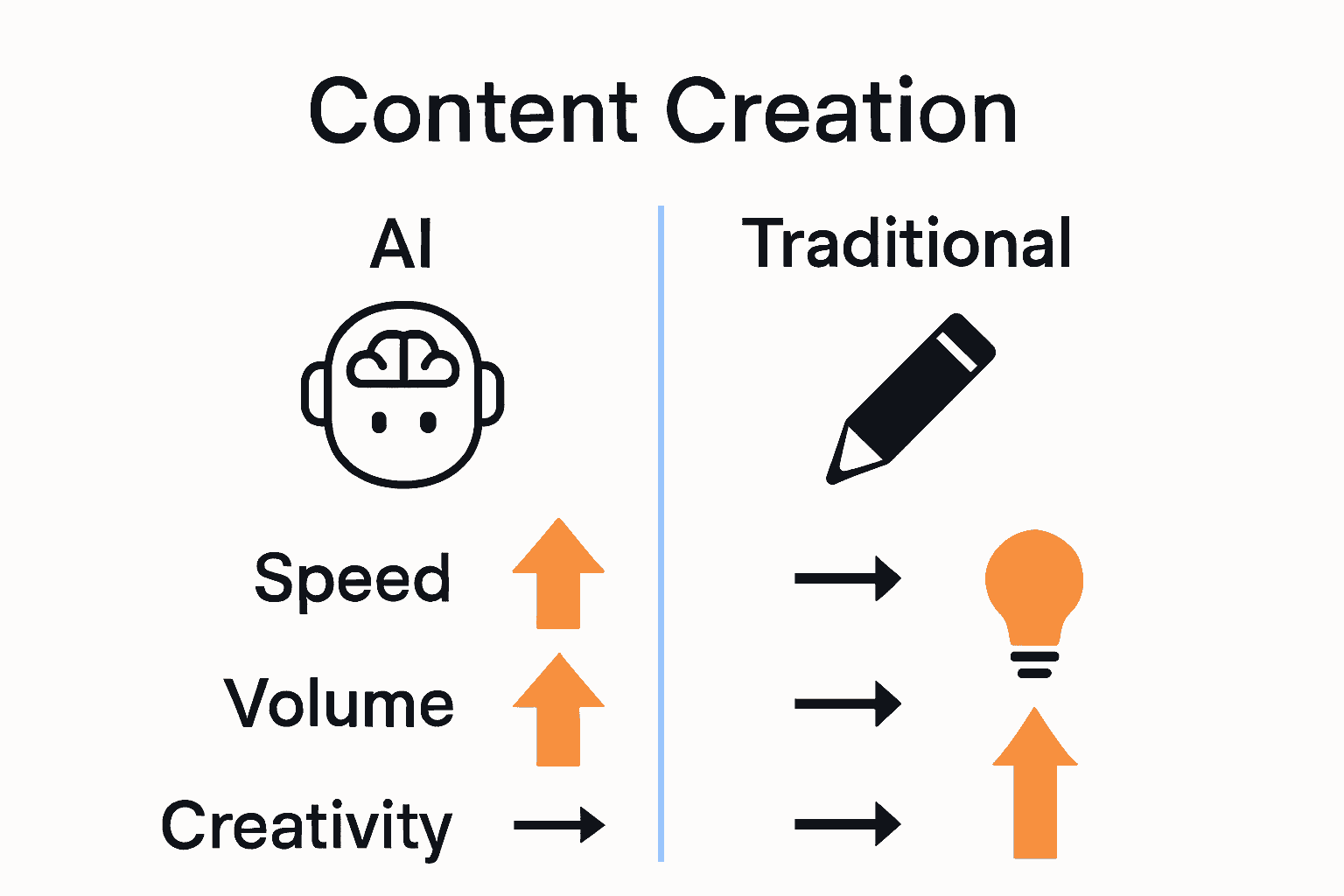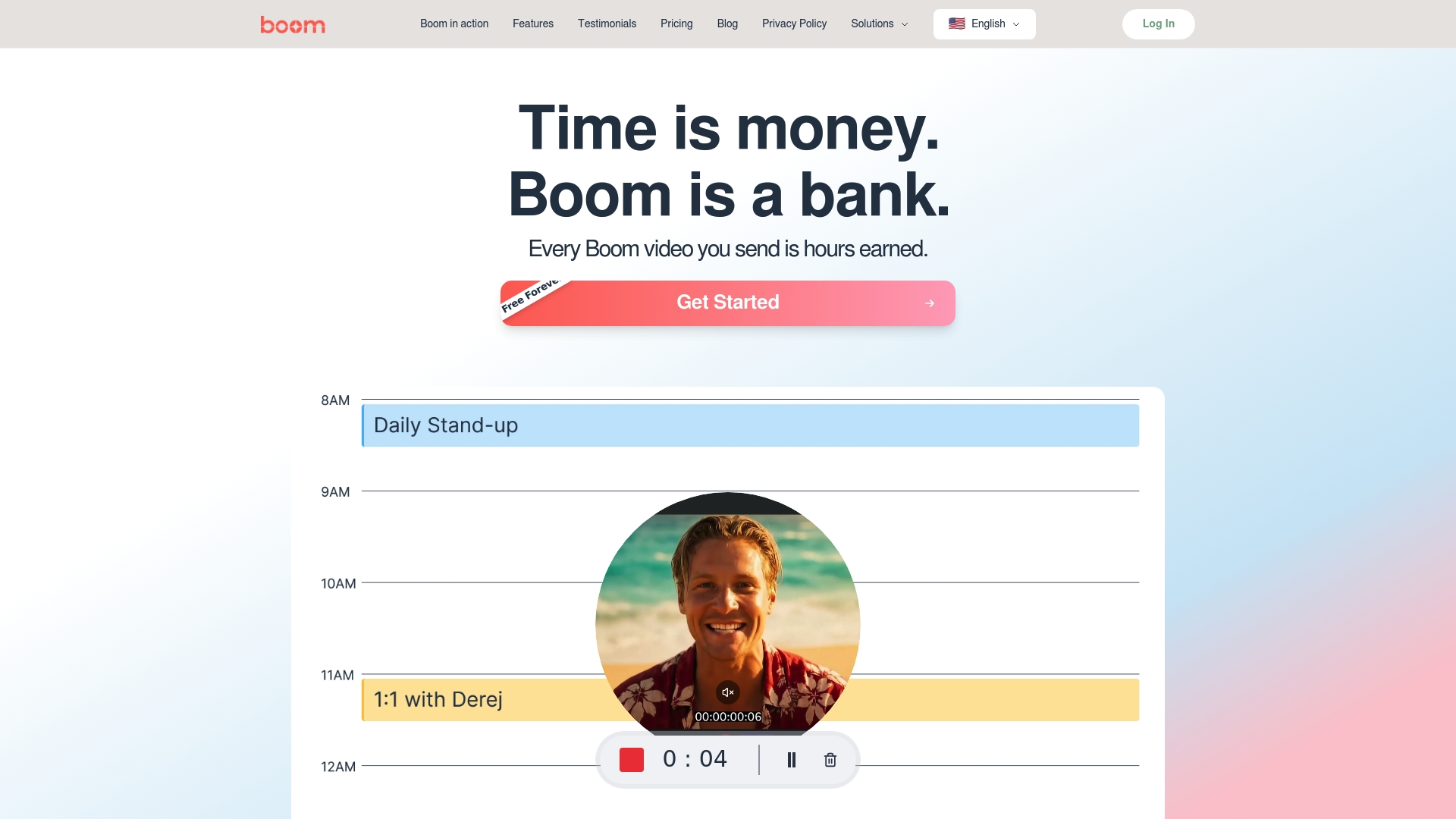Why Leverage AI in Content: The Essential Guide
Discover why leveraging AI in content creation matters. This guide covers key benefits, real-world examples, critical risks, and how AI transforms productivity.
Aditya
Author
Why Leverage AI in Content: The Essential Guide

Did you know that AI-generated content can increase team communication by 137 percent? As artificial intelligence reshapes how digital material is made, content creators face new possibilities and unexpected challenges. From supercharged productivity to real concerns over accuracy and trust, the wave of AI-powered tools is changing what creative work looks like. Understanding these shifts helps you make better decisions about how to blend technology with human insight for your next project.
Key Takeaways
| Point | Details |
|---|---|
| AI Content Generation | AI-driven content creation uses generative algorithms to produce text and multimedia, mirroring human creativity but poses challenges like accuracy and source integrity. |
| Benefits for Teams | Integrating AI improves productivity and collaboration in content teams, yielding communication and content creation focus enhancements by up to 60%. |
| Risks and Limitations | The use of AI content tools raises concerns about content hallucinations, bias, and accountability, necessitating careful management and regulatory frameworks. |
| AI vs. Traditional Methods | AI offers faster and more efficient content generation, but traditional methods excel in emotional storytelling and contextual understanding, highlighting the value of collaboration. |
Table of Contents
Defining AI-Driven Content Creation
- Defining AI-Driven Content Creation
- Types of AI Applications in Content
- Key Benefits for Modern Content Teams
- Risks and Limitations of AI Content Tools
- Comparing AI Content to Traditional Methods
AI-driven content creation represents a revolutionary approach to generating digital materials using advanced machine learning algorithms. Generative AI tools work by processing statistical patterns across massive language datasets, enabling them to produce text, images, and multimedia content that mimics human-like creativity and communication.
However, these powerful tools are not without significant challenges. Research from academic sources reveals critical limitations in AI content generation, particularly around accuracy and trustworthiness. Key concerns include:
- Content Hallucinations: AI frequently generates plausible-sounding information that is factually incorrect
- Source Integrity: Generated content often lacks identifiable or verifiable sources
- Contextual Understanding: Models struggle with nuanced interpretations requiring deep human comprehension
According to research published in academic journals, large language models like ChatGPT demonstrate remarkable natural language fluency while simultaneously presenting substantial risks of generating misleading or erroneous content. Addressing these factuality challenges requires a multifaceted approach involving:
- Robust regulatory frameworks
- Advanced fact-checking mechanisms
- Enhanced user digital literacy
- Continuous algorithmic refinement
Learn more about AI content strategies to navigate this complex and rapidly evolving technological landscape responsibly.
Types of AI Applications in Content
AI technologies have dramatically transformed content creation across multiple domains, offering creators unprecedented tools to streamline and enhance their workflow. Multimedia content generation has emerged as a particularly exciting frontier, where artificial intelligence demonstrates remarkable capabilities in producing diverse digital materials.
According to research from technology experts, AI supports an impressive range of content applications:
- Voice Generation: Creating natural-sounding audio for podcasts and audiobooks
- Video Production: Generating script drafts and visual content
- Graphic Design: Designing logos, social media visuals, and marketing graphics
- Captioning: Automated transcription and subtitle generation
The versatility of AI extends beyond simple content reproduction. Modern AI tools can analyze audience preferences, generate personalized content recommendations, and even predict emerging content trends. This predictive capability allows creators to craft more targeted and engaging materials that resonate deeply with specific audience segments.
Explore AI content strategies to unlock innovative approaches that can transform your creative process and amplify your content's impact. By understanding and strategically implementing these AI-powered tools, creators can develop more sophisticated, efficient, and compelling digital experiences.
Key Benefits for Modern Content Teams
AI integration represents a transformative opportunity for content teams, offering unprecedented improvements in productivity, creativity, and collaboration. Generative AI technologies are not just tools but strategic partners that can fundamentally reshape how teams approach content creation and workflow management.
Research demonstrates remarkable performance enhancements when AI is strategically integrated into team processes. According to controlled studies, human-AI collaborative teams outperform traditional human-only teams across multiple performance metrics. Specifically, centralized AI integration proves more effective than distributed usage, suggesting that a structured approach to AI implementation yields the most significant benefits.
The productivity gains are substantial and multifaceted:

- Communication Enhancement: AI agents increase team communication by 137%
- Content Generation Focus: Teams can concentrate 23% more on content creation
- Editing Efficiency: Reduced editing time by approximately 20%
- Overall Productivity: Up to 60% increased worker productivity
Learn about our marketing solutions to understand how AI can be strategically deployed to transform your content team's performance. By embracing these technologies thoughtfully, teams can unlock new levels of creativity, efficiency, and strategic impact, turning AI from a mere tool into a powerful collaborative partner.
Risks and Limitations of AI Content Tools
While AI content tools offer tremendous potential, they simultaneously present significant challenges that demand critical examination and proactive management. Generative AI technologies are not infallible systems, but complex algorithms with inherent vulnerabilities that can compromise content integrity and user trust.
Research from academic sources reveals multiple critical risks associated with AI-generated content:
- Content Hallucinations: Generating plausible-sounding but entirely fabricated information
- Source Traceability: Inability to definitively track or verify content origins
- Data Bias: Potential misrepresentation of minority perspectives
- Accountability Gaps: Unclear responsibility mechanisms for generated content
- Potential Misuse: Risk of creating deepfakes or fraudulent materials
According to advanced research studies, large language models frequently produce misleading or erroneous outputs that can have substantial consequences across professional and academic domains. The proliferation of these AI-generated inaccuracies underscores the urgent need for comprehensive technological safeguards, robust regulatory frameworks, and widespread AI literacy initiatives.
Learn about our product management solutions to understand how responsible AI implementation can mitigate these risks while preserving the transformative potential of artificial intelligence in content creation.
Comparing AI Content to Traditional Methods
Content creation methods have undergone a radical transformation with the emergence of artificial intelligence, presenting a complex landscape of opportunities and challenges. Traditional content creation relied exclusively on human creativity and expertise, while AI-powered tools now offer unprecedented speed, scalability, and computational analysis that fundamentally reshape creative workflows.
The key differences between AI and traditional content methods emerge across several critical dimensions:
- Speed: AI generates content exponentially faster than human writers
- Volume: Capable of producing massive amounts of content simultaneously
- Consistency: Maintains uniform tone and style across multiple pieces
- Cost-Efficiency: Significantly reduces labor and time-related expenses
- Data Processing: Analyzes complex datasets beyond human capacity
However, traditional human-driven content creation still holds distinct advantages that AI cannot fully replicate. Human creativity brings nuanced emotional intelligence, contextual understanding, and authentic storytelling that current AI models struggle to generate. The most effective approach emerging is a collaborative model where AI augments human creativity rather than attempting to completely replace it.
Learn about our design solutions to explore how intelligent tools can seamlessly integrate with human creativity, creating a powerful synergy that transforms content production. By understanding the unique strengths of both AI and human approaches, creators can develop more sophisticated, engaging, and impactful content strategies.
Here's a comparison of AI-driven and traditional content creation methods:

| Key Dimension | AI-Driven Content Creation | Traditional Methods |
|---|---|---|
| Speed | Instantaneous output | Time-intensive process |
| Volume | Mass content generation | Limited by human bandwidth |
| Consistency | Uniform style and tone | Varies by creator/editor |
| Cost-Efficiency | Lower labor and production cost | Higher ongoing costs |
| Creativity | Mimics patterns, limited nuance | Deep emotional storytelling |
| Data Processing | Analyzes large datasets | Manual research and synthesis |
| Contextual Depth | Struggles with subtlety | Strong nuanced understanding |
Transform Your Content Strategy With AI-Powered Video Creation
Are you struggling with the limits of traditional content workflows? The article highlighted how AI-driven solutions can erase productivity roadblocks, reduce wasted time, and provide reliable efficiency. Many teams face frustration from slow writing cycles, fact-checking errors, and endless meetings that break creative flow. If you have felt blocked by these pain points, it is time to level up.
Take control with Boom’s async video platform. Boom uses generative AI to script, voice, and brand your videos instantly so you can share impactful updates or pitches with no scheduling required. This aligns with the guide’s focus on AI-powered content, automation, and accurately amplifying your team’s message.

Why wait for another slow review cycle or risk miscommunication? Master async video creation with Boom and leave behind repetitive edits. Explore how AI-driven tools optimize content quality, accuracy, and speed. Start now for free at Boom’s homepage and make your next project more productive, creative, and stress-free.
Frequently Asked Questions
What are the benefits of using AI in content creation?
AI enhances productivity by streamlining workflows and generating content faster. It also supports team collaboration, improves communication, and allows for scalability in content production.
What are the main risks associated with AI-generated content?
The key risks include content hallucinations (factually incorrect information), source traceability issues, potential data bias, and challenges in accountability for generated content.
How does AI compare to traditional methods of content creation?
AI-driven content creation is much faster, produces higher volumes, maintains consistency, and is often more cost-efficient. However, traditional methods excel in emotional intelligence, nuanced storytelling, and contextual understanding that AI currently struggles to replicate.
What types of content can be created using AI technologies?
AI can generate various types of content, including text, voice, video, graphic designs, and automated captions. It can also personalize content recommendations based on audience preferences.
Recommended
About the Author
Aditya
Software Engineer.
